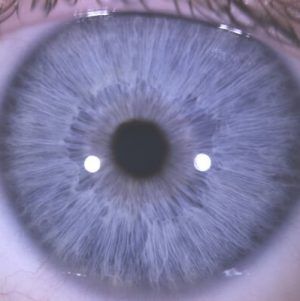Bone Density - How's Yours? Why Is It Like That?
Study these two indicators that suggest the potential for problems with bone density.
by Judith Cobb, MH, CI3, NCP, NNCP, CCII3
DISCLAIMER
This article is not meant to diagnose nor prescribe. It is meant for educational purposes only. Judith Cobb, Cobblestone Health, and Nature's Sunshine Products accept no responsibility for results you get, whether good or bad, from using this information. Always seek the guidance of a qualified health professional.
Medical science has ways of assessing bone density. Some of them, including the ‘gold standard’ DXA, measure density only, not elasticity. Any testing methods that use x-ray, including DXA, create ionizing radiation. The overuse of and accumulation of x-rays of any kind over a lifetime increases the risk of cancer. None of the current tests shed any light on why the bone has lost density.
Whether your client has come to you with bone density test results or not, a thorough iridology assessment, coupled with a dietary analysis, should help you understand your client’s risk of bone issues. It may even shed some light as to why the bones are at higher risk of losing density. Iridology cannot tell you if the bones have lost density.
We never, ever, use iridology to diagnose (name a disease) or prescribe (give a remedy to heal a disease). We always use it to assess strengths, weaknesses, and imbalances. As we understand these things, we can draw on our herbal, nutritional, and other holistic training to teach our clients how to create a better balance. At times we may need to use the information gathered to refer our clients to seek medical attention.
When you see these iridology markers, you need to ask your client bone and digestion relevant questions.
One Bone Iridology Sign and One Digestive Sign
We need to remember that the sequence of nutrition and health, physically, is food choices, digestion, absorption, assimilation, elimination. If any one of these is not what it should be, health will not be optimal. (We are not dealing with emotional health here – although there is some evidence that specific emotional traumas can play a significant role in weakening the bones.)
1) Osseous Netting
 It is highly unlikely you will be able to identify this sign without some powerful magnification. The iris is divided into seven concentric rings of varying widths. These are called ‘zones’. The fifth zone, counting from the pupil outwards, is universally recognized as the bone or osseous zone. In this zone we sometimes see fine spider web-like fibers weaving against the grain. These fibers may also be seen in zones six and seven (closer to the periphery of the iris). When they are present they usually do not circumnavigate the iris; they are often limited to smaller areas within the zones.
It is highly unlikely you will be able to identify this sign without some powerful magnification. The iris is divided into seven concentric rings of varying widths. These are called ‘zones’. The fifth zone, counting from the pupil outwards, is universally recognized as the bone or osseous zone. In this zone we sometimes see fine spider web-like fibers weaving against the grain. These fibers may also be seen in zones six and seven (closer to the periphery of the iris). When they are present they usually do not circumnavigate the iris; they are often limited to smaller areas within the zones.
Their exact location can give us ideas as to which bony structures may be at more risk of problems. They often suggest an increased risk of arthritis.
Arthritis is often the result of inflammation (frequently caused by over-acid conditions or injury), poor nutrition, and inadequate mineral absorption. These are often causes of osteoporosis as well.
2) Stomach Ring
 The stomach ring, seen as an obvious band of a different color (white, pink, mauve, gray, brown, etc.) hugging the pupil (zone one), can suggest an inherited digestive insufficiency. The stomach’s focus is digesting protein. To maintain strong bones we need optimal amounts of protein in the diet, and we need to be able to digest that protein.
The stomach ring, seen as an obvious band of a different color (white, pink, mauve, gray, brown, etc.) hugging the pupil (zone one), can suggest an inherited digestive insufficiency. The stomach’s focus is digesting protein. To maintain strong bones we need optimal amounts of protein in the diet, and we need to be able to digest that protein.
Most people do not know if they digest protein well or not. Here’s what you can teach them. If they pass gas, as we all do, and that gas smells putrid, they are likely not digesting protein well. It’s probably rotting in their gut instead of being digested.
A study published in the International Journal for Vitamin and Nutrition Research in 2011 reported higher protein diets, but not exceeding 2 grams of protein for every kilogram of bodyweight everyday, increased calcium absorption and bone strength.
We may be able to increase bone density and elasticity by ensuring adequate protein and calcium intake and supporting protein digestion in the stomach, especially if a stomach ring is present.
These are just two of the indicators that suggest the potential for bone issues.
Watch this video to learn about these two iris signs:

This video contains three case studies featuring bone and skin iris markers:

Copyright © 2018 by Judith Cobb, Cobblestone Health Ltd. All rights reserved. Please respect the time it takes to write and publish articles. If you will link to this article and give proper attribution, you are encouraged to quote sections (though not the entire article).

